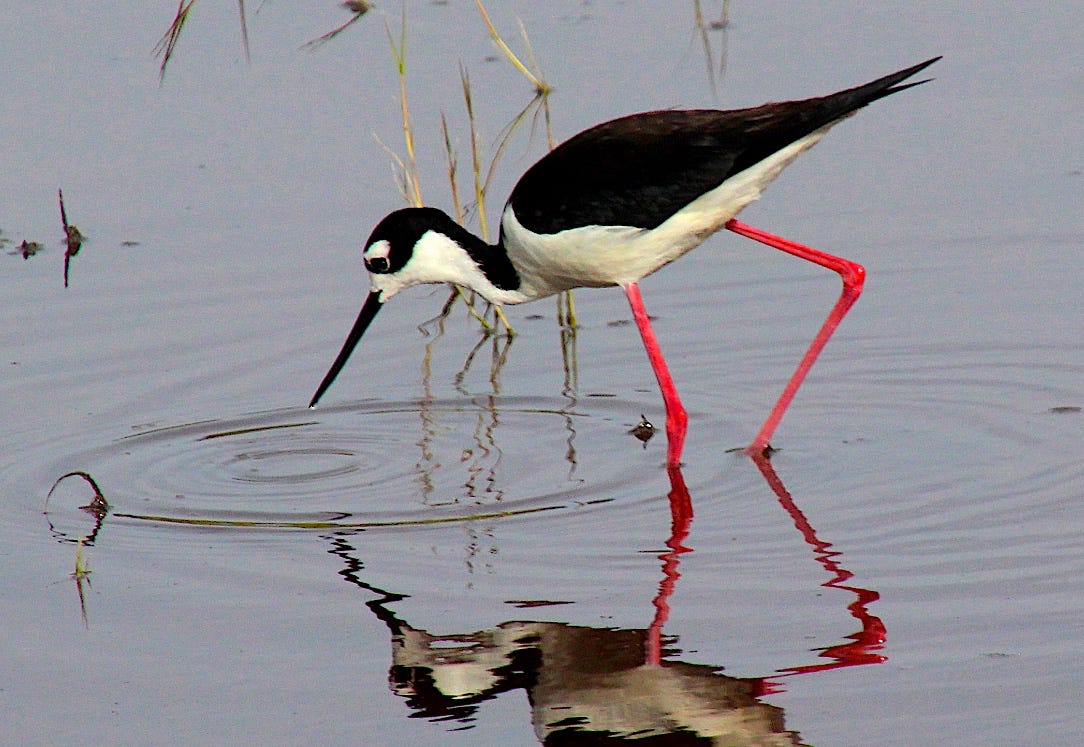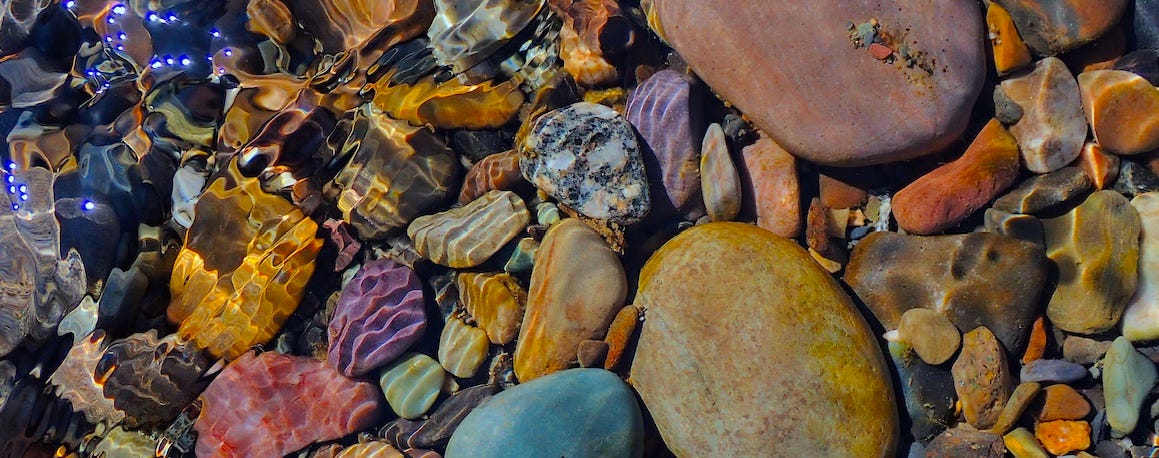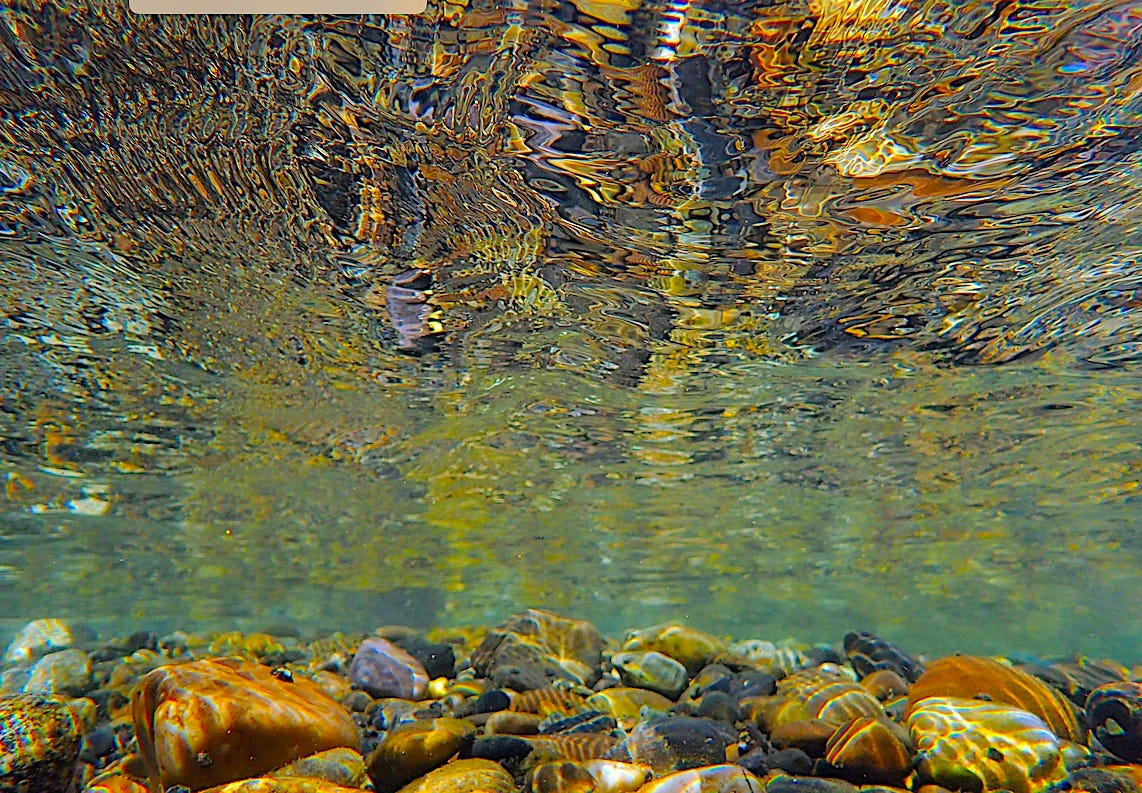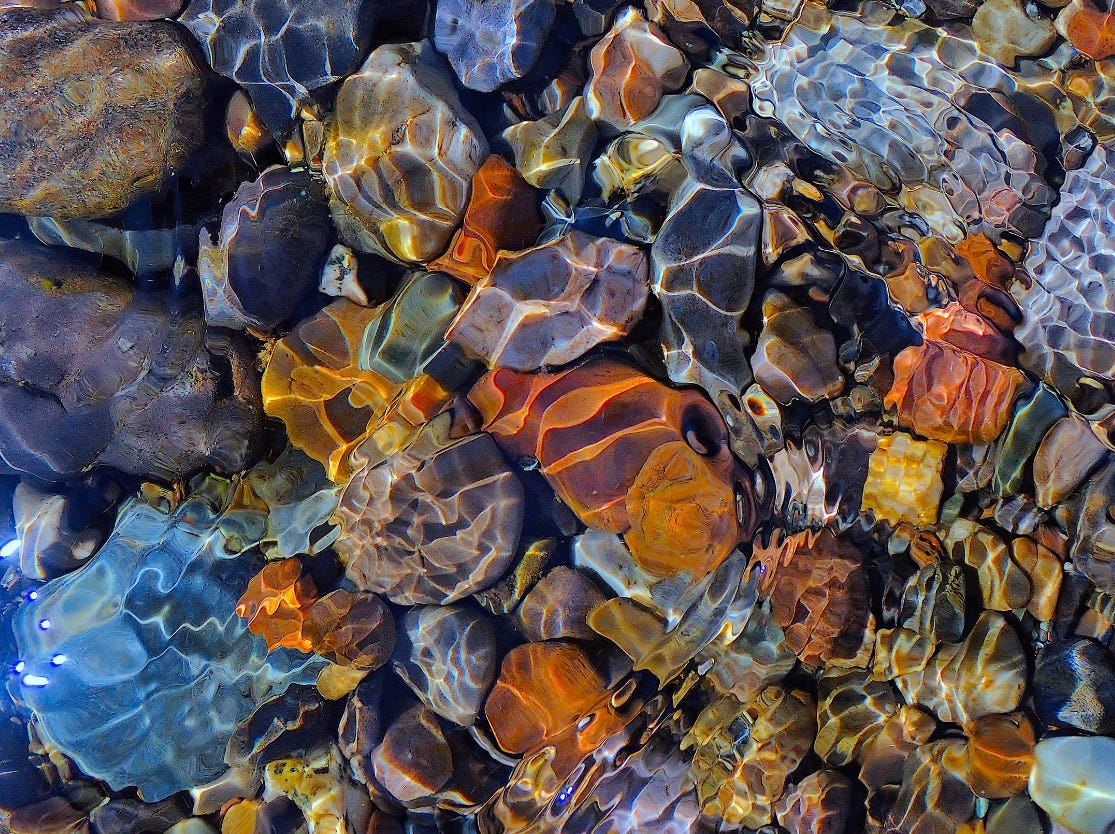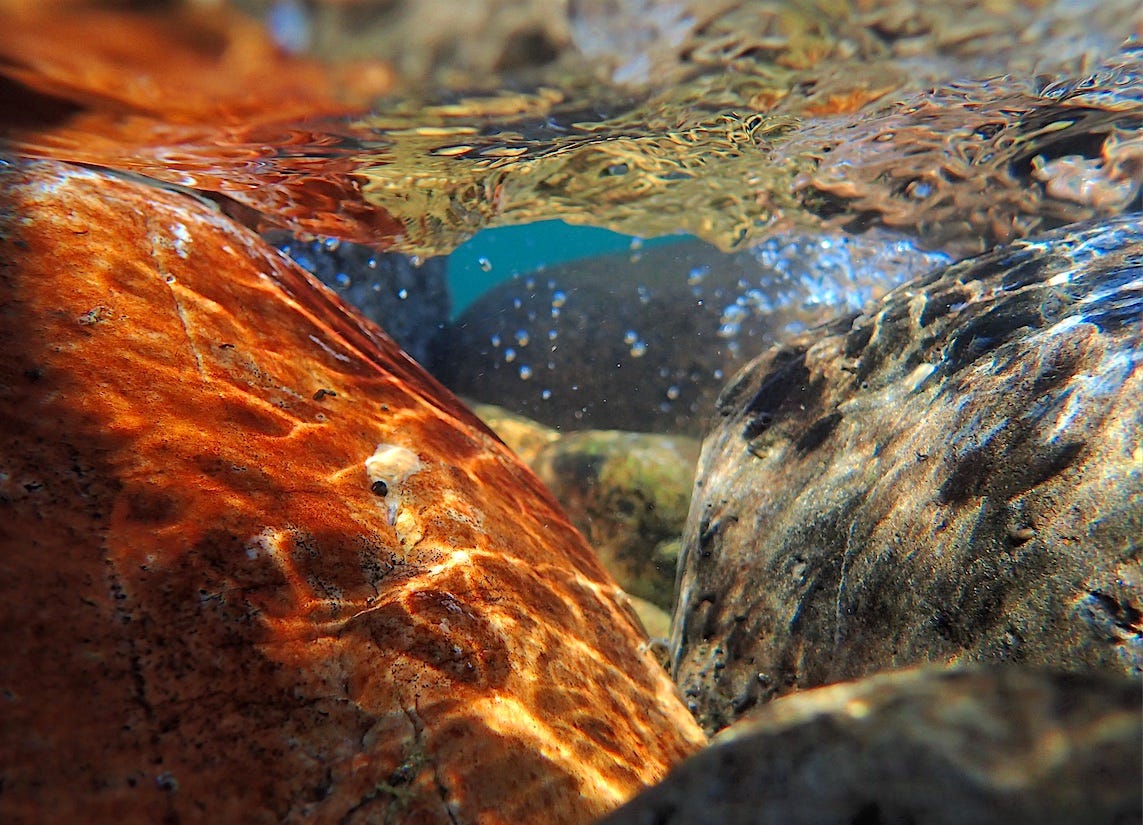Black-necked stilt feeding in an ephemeral wetland near Sprague Lake
Time traveling cobbles
Implicit by definition, a rock is a time capsule. I had no concept of this when I was four, when I was living in a house, on stilts, in a rain forest (long story) because I was preoccupied, then, by things like bamboo, and incredibly large insects, like mantises the length of my forearms, and my pet rhinoceros beetle, about the size of a baking potato, if you can imagine a baking potato with a curved horn and obsidian legs with barbs on them. Hard to beat that, when you’re four.
I didn’t take much notice of rocks until I was a first grader. It rains quite a bit in Panama and the Panama Canal Company built ditches and culverts to channel the run-off away. The excavations unloosed rocks, some of which were rich in quartz, which could be mistaken for diamonds, but were (nonetheless) unmistakably shiny.
A friend of mine reintroduced me to rocks when I was in my mid-forties. He occasionally swam where I swim now, in a part of the Spokane River where, by mid-June, a bar reappears, as the water level of the river recedes after spring run-off. It’s not a bar in the Dean Martin-Jimmy Buffett sense of where you’d like to retreat after a long day at work. Rather, it’s in the geographic sense of a sand bar you’d want to avoid with your sloop or barge.
But it isn’t a sand bar. It’s a cobble bar. Rinsed of silt and slime by the current of the river, the cobbles shine in rainbow colors. It took a while to learn that most of the brilliant cobbles (and nearly all of the large boulders nearby) are not native to the river bed—that they’d been hauled in from Idaho, Montana, and Canada by Ice Age floods, some 17,000 years ago at the tail end of the Pleistocene. Many, if not most, formed deep in the crust over a billion years ago—in the very ancient Belt Basin (the Canadians call it the Purcell Basin). Though mixed with granites, sandstones, and tumbled eggs of basalt, they are primarily argillite, consisting of compressed muds and silts, and at least mildly metamorphosed. I can’t help but pick them up and tuck them in the hip space of my bathing suit and then, on shore, into my backpack.
There may be a sense that I move to freely between geology and whimsical prose. But, in my defense, so do geologists, at times, as they discuss these intriguing ancient rocks and their layers and colors. This is from geologists David Alt and Donald Hyndman’s “Roadside Geology of Idaho”—in a section entitled “The Vanished Precambrian World”—
…Belt sedimentary rocks contain much less clay in proportion to silt and sand than do most younger rocks. Did minerals not weather into clay a billion years ago? Evidently not. The silt and sand show little or no evidence of having moved before the wind. Did no wind blow a billion years ago? If so, the rocks contain no evidence of it. Belt rocks contain no animal fossils. Were there no animals a billion years ago? Apparently not. That distant planet on which those strange rocks accumulated is forever vanished, evolved into a completely different world. We will never see it, never know for sure what it was like. But the rocks are not really as mute as the proverbial stone. They whisper suggestions that can inspire reasonable conjecture.
Also, my frustrated (but kind) stable of astute business advisors likes it when I remind you that the photos, below, come from my cameras,; are rumored to promote healing of all sorts and even lower summer temperatures, albeit in confined and imaginary spaces. And you can purchase them, seriously. They really shine on metal.
“The brilliant resilience”
The crystal ceiling
“Time in a Cradle”—Small boulder of Belt Basin argillite on a bed of Grand Ronde basalt
“Topography”
Ancient cobbles, briefly dried and domesticated on the table next to my desk
“Whence it Came”
Boulder in the blue
Desk-sized, ancient boulder near the Devil’s Toenail. A bit too big to tuck in my suit…
Basic ingredients
—tjc





